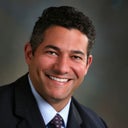Posted underFUE Hair Transplant q&a
30 year old male with thin hair and bald patches in crown. Is FUE safe for me? (Photo)
Hi, I am a 30year old male, having considerable hair thinning and some bald patches in the crown area.. I have a Hair-Max comb and do have hypothyroidism (take thyroxin pills). Thing is I want to cover up the bald patches without those toppik/hair fibers as I am into outdoor sports. Is it safe for me to go for a hair transplant (shock loss aftereffects).. If so , then how many grafts should be enough for a full head of hair impression based on the pics. Thanks, you guys are doing a great job.
Answers (7)
From board-certified doctors and trusted medical professionals

Dr. Jae Pak, MD
Hair Restoration Surgeon, Board Certified in Emergency Medicine
Answer
Dr. Michael Meshkin, MD - Account Suspended
Board Certified Hair Restoration Surgeon
Answer
Dr. William Rassman, MD (retired)
Hair Restoration Surgeon, Board Certified in General Surgery
Answer
More FUE Hair Transplant Questions
See all FUE Hair Transplant Q&AWE SEND PRETTY
EMAILS
What’s trending? Who’s turning heads? Which TikTok myths need busting? We’ve got you. No fluff, no gatekeeping—just real talk. Get our free, unfiltered newsletter.

